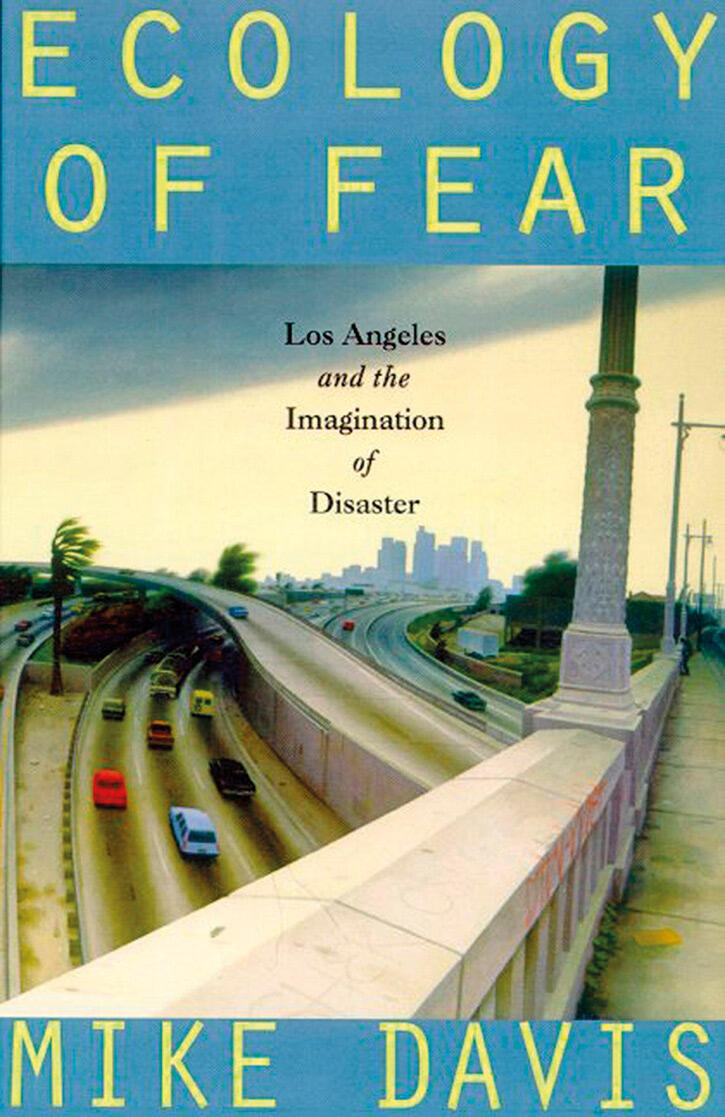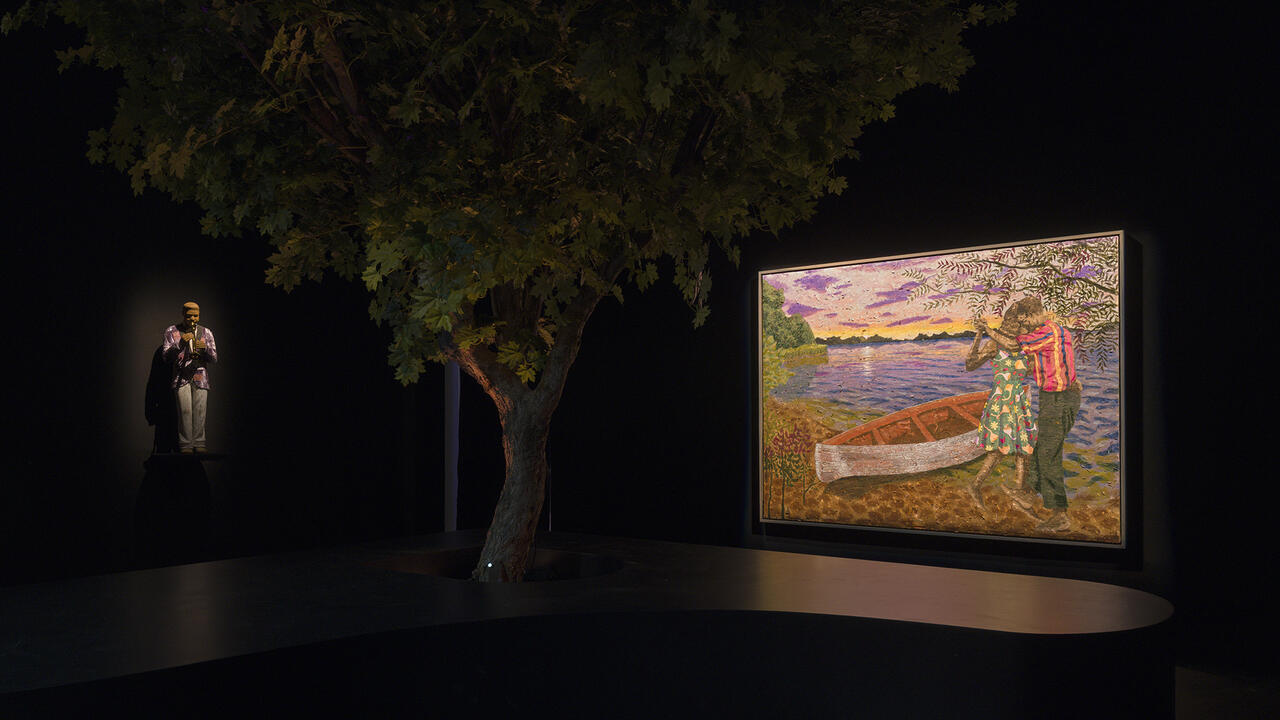Mike Davis’s ‘Ecology of Fear’ Is Still a Ticking Bomb
Twenty-five years since its publication, the correlations between power, wealth and ecology depicted in Davis's book remain utterly relevant
Twenty-five years since its publication, the correlations between power, wealth and ecology depicted in Davis's book remain utterly relevant

I read Mike Davis’s Ecology of Fear: Los Angeles and the Imagination of Disaster (1998) for the first time when I moved to Los Angeles 20 years ago. Shortly thereafter, on a stormy January night, I stepped out of my girlfriend’s apartment onto a steep concrete staircase that led down to the street far below. It was raining torrentially and we had just had our first serious fight. As I descended the steps, gigantic raindrops seemed to crack like marbles on the concrete as they made landfall. I was halfway down the staircase, eyes still blurry with tears, before I realized I was walking on snails – thousands of them crunching beneath my feet, covering every inch of the concrete staircase, as if the pounding rain had pushed a new species, or a new generation of a prehistoric one, up from the depths of the earth.
There are two big ideas that course like intertwining currents through Ecology of Fear. The first is that, if the disparity in the distribution of wealth and power never stops growing, American democracy will at some point become untenable. The second is that, if capital imperatives always win out over ecological ones, something will eventually break and, when it does, it will have a hugely disproportionate impact on those who can least afford it.

I no longer live in Los Angeles but, as temperatures rose alarmingly across the Northern Hemisphere last summer, I returned to Ecology of Fear with a specific chapter in mind. In ‘The Case for Letting Malibu Burn’, Davis argues that continuing to invest money in rebuilding and defending valuable private real estate in fire-prone areas is not only stupid, but savagely unethical if proportionate resources are not being allocated to regulate and improve buildings in poorer, densely populated neighbourhoods where fire poses a far greater threat to human life. It is a persuasive argument, one that draws on environmental common sense, generations of Chumash and Tongva land-management practices, and rudimentary human ethics. And every time Malibu burns, it is reliably referenced and reliably ignored.
Writing in the Los Angeles Times in 2002, journalist Fred Siegel dubbed Davis a ‘prophet of doom’ for forecasting in his 1990 masterpiece City of Quartz, the social unrest that followed the acquittal of the police officers responsible for the racially motivated attack on Rodney King. That reputation was solidified by The Monster at Our Door, which predicted, in 2005, that the unregulated expansion of a globalized economy could lead to a devastating pandemic of avian influenza. Revisiting Ecology of Fear, I was particularly struck by his anticipation of another sort of disaster, one that requires no real prophecy, but the absence of which induces a sense of anxiety that intensifies with every passing year: the next Los Angeles earthquake. To the prognosticator, this is low-hanging fruit, but I was struck less by the prediction itself than by a framing device that felt uncomfortably resonant in our current economic moment. ‘The tempo of actual disaster,’ Davis writes, ‘has been oddly attuned to the business cycle. All the major 20th-century floods and earthquakes have coincided with recession or slow-growth years.’
This is a rhetorical construct that takes some subjective liberties, to be sure, but its power lies in what it implies. The synchronicity of ecologic and economic cycles may be correlation, not causation, but, as we sit on the brink of a recession that feels all-but-inevitable, it is easy enough to imagine these two timebombs ticking in sync.

Recessions do not beget earthquakes, yet by asking the reader to hold them together in their mind, Davis underlines both the ways in which theses cycles play against each other and how we come to understand them. The fundamental fallacy of Los Angeles, Davis reminds us throughout Ecology of Fear, is that the safety of present and future generations is based on an infinitesimally small slice of geological past when, in fact, the city’s entire history has unfolded during a time of unprecedented tectonic inactivity. Whatever happens next, it will involve, writes Davis, a ‘decisive quotient of surprise’.
The absence of disaster – be it in the last two centuries of relative calm or our more recent ‘seismic siesta’ – leads to complacency. Because economic growth tends to loosen, not constrict, regulation, the more time that passes between high-intensity, low-frequency events, the larger the impact of those events tends to be. This ‘disaster inflation’ is part of the reason economic damage has increased, as Davis notes, ‘by almost an order of magnitude between each of Los Angeles’s major 20th-century earthquakes’. When the next major earthquake hits the city, whether it is during a recession or not, this logic will likely hold, the brunt of that impact will be borne by those on the bottom of the economic ladder, and Davis will, again, be proven right.
This flair for hyperbole and speculation sometimes got Davis in trouble. ‘The Case for Letting Malibu Burn’ prompted one critic (albeit one with a vested interest in Malibu real estate) to compile a fastidious list of insinuations and inaccuracies in Davis’s oeuvre. The subsequent exposé damaged Davis’s reputation among academics but it did not seem to bother his most devoted readers. It certainly did not bother this one. To get mired in these details is to fail to understand that Davis was always building towards a larger picture – one in which data points matter less than trend lines. Davis had an astounding facility for synthesizing vast amounts of information on different cultural registers – flitting between fact and fiction, future and past – but he also had a genius for turning that information into stories. The chapter ‘The Literary Destruction of Los Angeles’ – a comprehensive taxonomy of disaster films and novels – helps us understand what our imagination of disaster can tell us about ourselves. (Spoiler alert: it’s not good.)

Davis was also a beautiful writer. In his discussion of earthquakes, for instance, he leans into the suggestive patois of seismology – ‘stress relaxation shadows’, ‘killer pulses’, ‘nonlinear resonances’, ‘blind thrust faults’ – to draw his readers into the story of a phenomenon unfolding in geological time. In his hands, earthquakes become not so much formless anxieties as expressions of embodied tectonic energy – forces profoundly indifferent to political or economic whim. Yet, his writing can also be intimate, dwelling on small anomalies in the natural environment – rattlesnakes washing onto the beach in San Diego; hordes of mice stampeding the San Joaquin Valley – that become harbingers of larger ecological forces at work. I know I never understood how fragile Los Angeles was until that night amongst the snails.
Los Angeles’s extreme collision with its own environment makes it a logical case study for Davis, but the ideas in Ecology of Fear apply broadly to advanced American capitalism. Davis was writing at a time when Los Angeles was uniquely positioned to capture the zeitgeist of American culture. It is remarkable how universally its lessons apply now. Market-driven urbanization in Miami, for instance – a city likely to dethrone Los Angeles as the metaphorical epitome of American depravity in the 21st century – has been every bit as reckless. When 98 people died in the collapse of a high-rise condominium in Surfside in 2021, news coverage revolved around personal tragedy and human error rather than the sheer lunacy of constructing high-rise buildings reinforced with steel on an island that percolates salt water from its porous limestone bedrock every time there is an abnormally high tide. Just as in Malibu, the expansion of southern Florida marches on in the face of common sense and in defiance of hazard zoning, as developers continue to build on an island that may well be underwater in our lifetime.
When it was released 25 years ago, critics were reluctant to fully embrace Ecology of Fear. The consensus in reviews from the time is that Davis was brilliant but dark, sardonic, dyspeptic – a fearmonger who saw the world, as Todd Purdum wrote in the New York Times in 1998, ‘through Marx-tinted glasses’. Yet, it should be clear to any careful reader of Davis’s work that he did not hate Los Angeles so much as he was pained by the ways in which its policy makers have repeatedly eschewed environmental common sense and ignored the fragility of the city’s surroundings. Returning to the book now, I am struck less by its cynicism than its lucidity. Davis’s fear is not that there is nothing we can do, but rather that ‘nothing is less politically realistic in the present climate’ as long as ‘the ostrichlike consensus is to ignore problems that are too big to fix.’
This article first appeared in frieze issue 232 with the headline ‘Imagining Disaster’
Main image: Mark Robson, Earthquake, 1974, film still. Courtesy: NBC Universal Media





















